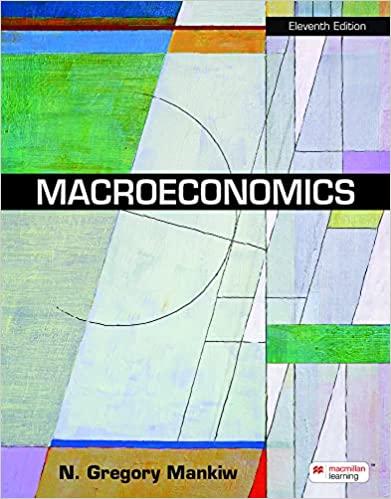7. (This problem requires the use of calculus.) Consider a CobbDouglas production function with three inputs. K
Question:
7. (This problem requires the use of calculus.) Consider a Cobb–Douglas production function with three inputs. K is capital (the number of machines), L is labor (the number of workers), and H is human capital (the number of college degrees among the workers). The production function is Y = K1/3L1/3H1/3.
a. Derive an expression for the marginal product of labor.
How does an increase in the amount of human capital affect the marginal product of labor?
b. Derive an expression for the marginal product of human capital. How does an increase in the amount of human capital affect the marginal product of human capital?
c. What is the income share paid to labor? What is the income share paid to human capital? In the national income accounts of this economy, what share of total income do you think workers would appear to receive?
(Hint: Consider where the return to human capital shows up.)
d. An unskilled worker earns the marginal product of labor, whereas a skilled worker earns the marginal product of labor plus the marginal product of human capital. Using your answers to parts
(a) and (b), find the ratio of the skilled wage to the unskilled wage. How does an increase in the amount of human capital affect this ratio? Explain.
e. Some people advocate government funding of college scholarships to create a more egalitarian society. Others argue that scholarships help only those who can go to college. Do your answers to the preceding questions shed light on this debate?
Step by Step Answer:







